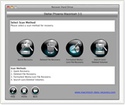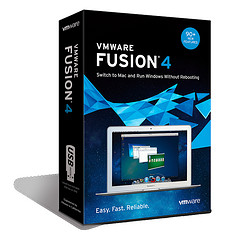If you’re looking for data recovery software for your Mac, you have several good choices. Among them: Stellar Phoenix (http://www.macintosh-data-recovery.com/
), REMO Recover (http://recovermac.remosoftware.com/), FileRecovery (http://www.lc-tech.com/software/frpromacdetail.html) and Data Rescue (http://www.prosofteng.com/products/data_rescue.php).
Stellar Phoenix Macintosh Data Recover 4.0 is Mac file repair software. However, it provides full preview support for recoverable files prior to restoration.
The software recovers lost/deleted data due to accidental deletion or formatting of HFS, HFS+, HFS Wrapper, and FAT file system volumes or corruption of the storage media. Stellar Phoenix Macintosh Data Recovery comes with a Boot DVD that can be used to boot the system if the file system crashes or the operating system doesn’t load. Its interface has a Mac style find option (to search for a particular file) and an audio and video file preview using Apple’s QuickTime Player.
Stellar Phoenix recovers deleted and lost data like documents, music, videos, pictures, e-mail, PDFs and more. It supports recovery from internal (SATA, EIDE, IDE) and external (USB, FireWire, eSATA) hard drives along with USB flash drives, memory cards and iPods. It also supports recovery of Microsoft Office for Mac files and Entourage mails.
Phoenix can recover a file with name, creation date, time and sector number. With it you can check the destination (not the scanned drive) and free space during the creation of images, saving of scans and saving of files.
The Stellar software offers support for KDC and CRW file formats — formats used by, respectively, some Kodak digital cameras and some Canon digital cameras. It can show the exact file size of Apple Mail, HTML, FileMaker, Quick Book, M4V, 3GP and Quark Series, ARW, DNG and ERF file formats.
Stellar Phoenix Macintosh Data Recovery 4.0 is available with single user, administrator, and technician licensing options. Pricing starts at US$99 for a single user license. It works with Mac OS X 10.3.9 or higher. It’s a Universal Binary, so it runs natively on both PowerPC and Intel Macs.
Remo makes a series of data recovery software tools for the Mac. Remo Recover (Mac) is designed exclusively for the Mac and. The tools have advanced data recovery algorithms, which help to recover: deleted/lost files from (HFS+, HFSX) journaled volumes; inaccessible, formatted or repartitioned Mac volumes; photos, RAW image, music and video files.
This read-only application doesn’t affect the volume or the Mac drive that contains deleted data. You always have an option to save recovered data to another volume, external storage or to a mapped network drive. The Remo tools are designed for use with hard drives (IDE, SATA, SCSI), USB drives, Firewire drives, external storage devices, digital cameras, mobiles and other removable storage devices.
The Save Scan info option saves a lot of time when you’re using the full version of the software, as the software doesn’t have to scan the whole drive again. Plus, it can make use of the Save Scan Info from the trial version session.
Remo Recover is available in two different editions, Remo Recover (Mac) — Pro Edition & Remo Recover (Mac) Media Edition. The former provides a dual mode of recovery tasks, including photo recovery. Remo Recover — (Media Edition) is designed for regular users and for advanced photographers to recover photos, videos, music and RAW image files from portable storage devices and hard drives. The Advanced mode offers scan options to accomplish tasks such as deleted/lost file recovery, formatted/lost volume recovery, from storage devices having healthy or corrupt HFS or HFSX file system.
The Pro Edition costs US$179. The Media Edition is $69. They require Mac OS X 10.4.11 or higher. Demos are available for download.
FileRecovery from LCTechnology is a do-it-yourself data recovery solution for recovering lost and deleted files from all types of media such as hard drives, optical drives, flash media drives, and multi-media or mobile devices. With it you can recover files whether they’ve been deleted from the command line, from within an application, the file system, or removed from the Trash.
What’s more, FileRecovery recovers formatted or lost drives, drives with a severe logical file system damage — and can even reconstruct lost RAIDs. The Mac version Mac runs natively under Mac OS X 10.4 and higher, and supports all partitions using the HFS/HFS+ file systems. It will also allow scanning and recovery from FAT formatted drives.
The Mac and Windows versions use the same interface. Both offer the ability to scan all volumes in a local machine and build a directory tree of lost and deleted files. You can search lost and deleted files matching file name criteria. FileRecovery doesn’t write on the drive it’s scanning. What’s more, saving data to any drive is possible, including network drives, removable media, and more.
FileRecovery’s standard write uses a system API to minimize the chance of disk corruption. It offers full access to the network and other installed peripherals and is compatible with Stripe Sets RAID and Mirrored Drives.
FileRecovery is available in three versions:
° Standard ($69.95, one-year subscription license), which will recover from local hard drives, optical media, digital media, and image files — but which won’t support RAID recovery or remote access recovery);
° Professional ($99.95, one-year subscription license), which will recover from local hard drives, optical media, digital media, and image files. This version supports RAID recovery, but doesn’t support remote access recovery;
° Enterprise ($199.95, one-year subscription license), which will recover from local hard drives, optical media, digital media, and image files. It supports RAID recovery, and remote access recovery via VNC (the viewer and client are included). The $199.95 price is for a single machine license; a commercial license is $299.99 for a one-year subscription.
Data Rescue 3 from Prosoft Engineering is a data rescue utility for Mac OS X 10.4.11 or higher. It works even when your hard drive fails to mount or boot and can rescue data from digital camera media cards as well as hard drives.
The software doesn’t attempt any repairs to the drive it’s scanning; it focuses on data recovery, not hard drive repair. You will need to save your recovered files to either an internal or external hard drive (USB or FireWire), removable media device (such as a Zip or MO) or a networked drive.
Data Rescue 3 has an extensive list of hundreds of file types it can recover. If the file type you’re looking to recover isn’t on the list, the software sports a feature called FileIQ that allows Data Rescue 3 to learn about new file types from user-supplied samples. FileIQ works by analyzing your file samples and adding the file patterns so that your User Defined file type can now be located.
Data Rescue 3 enhances your ability to find deleted files in another way: the Deleted Files Scan scans only the free space portion of your drive. This reduces the number of files that you must look for to find particular ones.
There are two ways to run Data Rescue 3. You may run it from the Boot DVD or you may run it as an application, depending on your circumstances. Data Rescue 3 costs US$99 for a personal use license and $249 for a professional use license. To use it you’ll need a Firewire, USB, eSATA or external drive to recover to.
— Dennis Sellers




